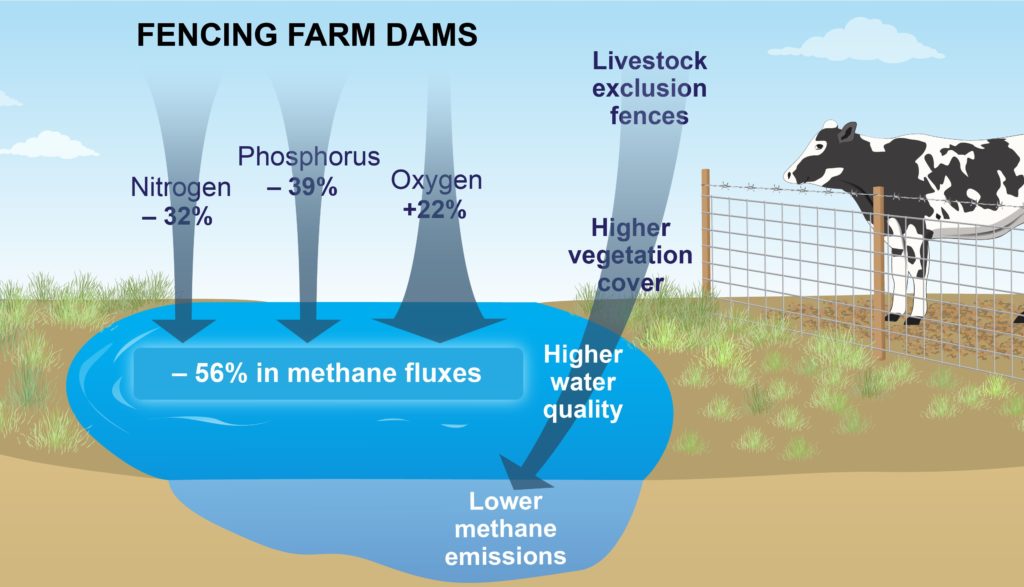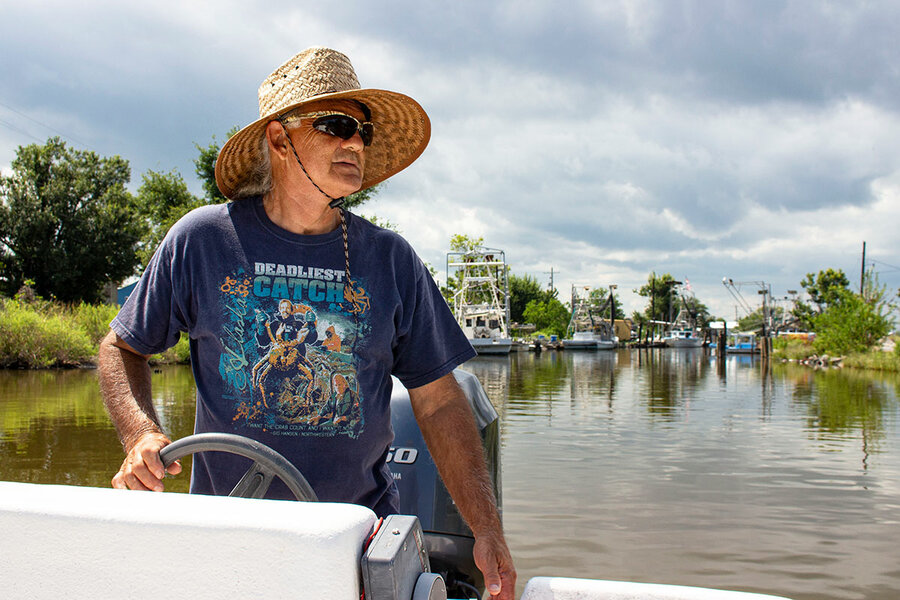Original publication by Jane McNaughton for abc.net.au on 7 June 2022

(Supplied: Deakin Blue Carbon)
Scientists are lobbying for farmers to be financially rewarded in the form of carbon credits for cleaning up their dams.
Deakin researcher Martino Malerba has spent the past four years determined to show farmers the simple solutions that can reduce their carbon footprint, after a 2018 study found farm dams emit significantly more greenhouse gases than other waterways.
“Farm dams are among the highest emitters of methane of any freshwater system,” Dr Malerba said.
“Just by fencing farm dams and excluding livestock from accessing the water has massive implications on methane emissions. In fact, it will reduce methane by more than half.”
Key points:
- Research has found farm dams are among the highest emitters of methane of any freshwater system
- Fencing farm dams to prevent livestock access reduces carbon emissions by 56 per cent
- Scientists are lobbying the Clean Energy Regulator for financial incentives to fence dams
New discovery
The new research by Deakin’s Blue Carbon Lab and the ANU’s Sustainable Farms team spanned 400 kilometres across south-eastern Australia.
“We compared 33 unfenced dams with 31 fenced dams — sites that are part of the Sustainable Farms dams study — and found the fenced dams produced 56 per cent less methane than unfenced,” Dr Malerba said.
“Most aquatic systems emit methane. That’s a normal property of water because there are organic materials that decompose in the water.”

(Supplied: Deakin Blue Carbon)
“When it decomposes in dams that have low oxygen, that decomposed carbon turns into methane and it bubbles out.”
Dr Malerba said this was because there was a larger concentration of nutrients in the water on farms.
“These emissions are triggered by things like fertiliser and manure, and so the logic here is if you fence the dam you won’t have manure going directly into the water,” he said.
“And if you improve the vegetation around the farm dam, it acts as a filter to avoid much of the other nutrients running off into the dam.
“It can just be a simple wire fence — anything that stops the livestock trampling all over the borders of a farm dam and entering the water.”
Chimney turned vacuum
The study found that fenced dams recorded 32 per cent less dissolved nitrogen, 39 per cent less dissolved phosphorus, and 22 per cent more dissolved oxygen.

(Supplied: Deakin Blue Carbon Lab)
Dr Malerba said the increase in oxygen had some remarkable environmental benefits.
“Low-oxygen water systems become like a chimney, producing methane all the time. But when you promote higher vegetation levels, that turns into better water quality and higher dissolved oxygen,” he said.
“Successful management can get your dam to a point where it switches from a chimney to a vacuum cleaner.
“It will start absorbing carbon dioxide and methane from the atmosphere and storing it inside the farm dam, so potentially dams can turn from a problem into a solution to reduce the carbon footprint of agriculture.”
Financial incentives
Dr Malerba said farmers should be rewarded for creating “methane vacuums” and Deakin University was working with the Clean Energy Regulator.
“We want to develop a methodology that will allow farmers to claim carbon credits for avoided emissions, and it makes perfect sense,” he said.
“Avoiding emissions of one gram of methane is equivalent to avoiding the emissions to 20–30 grams of carbon dioxide.
“It’s a much more efficient way of earning carbon credits if you target methane compared to carbon dioxide.”




